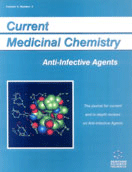Abstract
The chemistry of pyrimidines and its derivatives have been studied since past century due to their close pharmacological association with diverse pharmacological properties. Pyrimidine was first isolated by Gabriel and Colman in 1899. Though pyrimidine itself does not exist in nature but substituted pyrimidines containing pyrimidine moiety are found as a part of more complex system and are widely distributed. Pyrimidines are considered to be important not only because they are an integral part of the genetic material viz. DNA and RNA as nucleotides and nucleosides but they also impart numerous biological activities such as bactericides, fungicides, viricides, insecticides and meticides. They have also found application in agricultural and industrial chemicals. Many reviews on naturally occurring pyrimidines are available on general introduction including broad principles, detailed general procedure, synthetic procedures along with physical properties. But no collective information is available on role of pyrimidines as bioactive compound. This biodynamic property of the pyrimidine ring system prompted us to account for their pharmacological properties especially as anti-infective agents. Here we are reporting a specialized review, which focuses on different aspects of pyrimidine as anti-infective agent.
Keywords: pyrimidines, anti-Infective agents, substituted pyrimidines, insecticides, meticides, industrial chemicals, bioactive compound, anti-infective agent
 5
5

